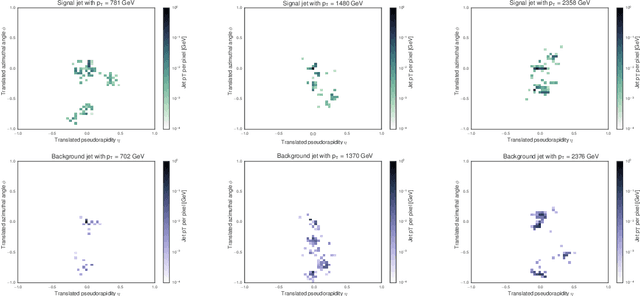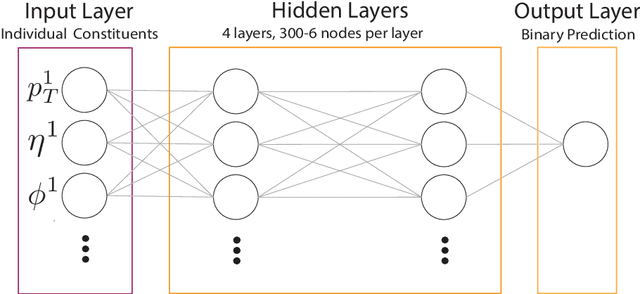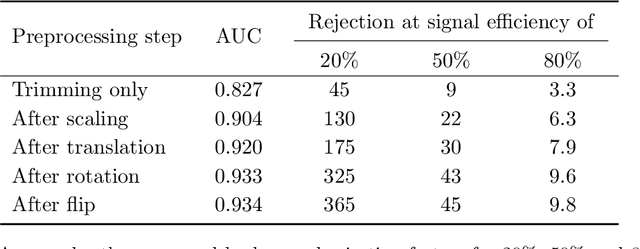Jet Constituents for Deep Neural Network Based Top Quark Tagging
Paper and Code
Aug 09, 2017



Recent literature on deep neural networks for tagging of highly energetic jets resulting from top quark decays has focused on image based techniques or multivariate approaches using high-level jet substructure variables. Here, a sequential approach to this task is taken by using an ordered sequence of jet constituents as training inputs. Unlike the majority of previous approaches, this strategy does not result in a loss of information during pixelisation or the calculation of high level features. The jet classification method achieves a background rejection of 45 at a 50% efficiency operating point for reconstruction level jets with transverse momentum range of 600 to 2500 GeV and is insensitive to multiple proton-proton interactions at the levels expected throughout Run 2 of the LHC.
 Add to Chrome
Add to Chrome Add to Firefox
Add to Firefox Add to Edge
Add to Edge